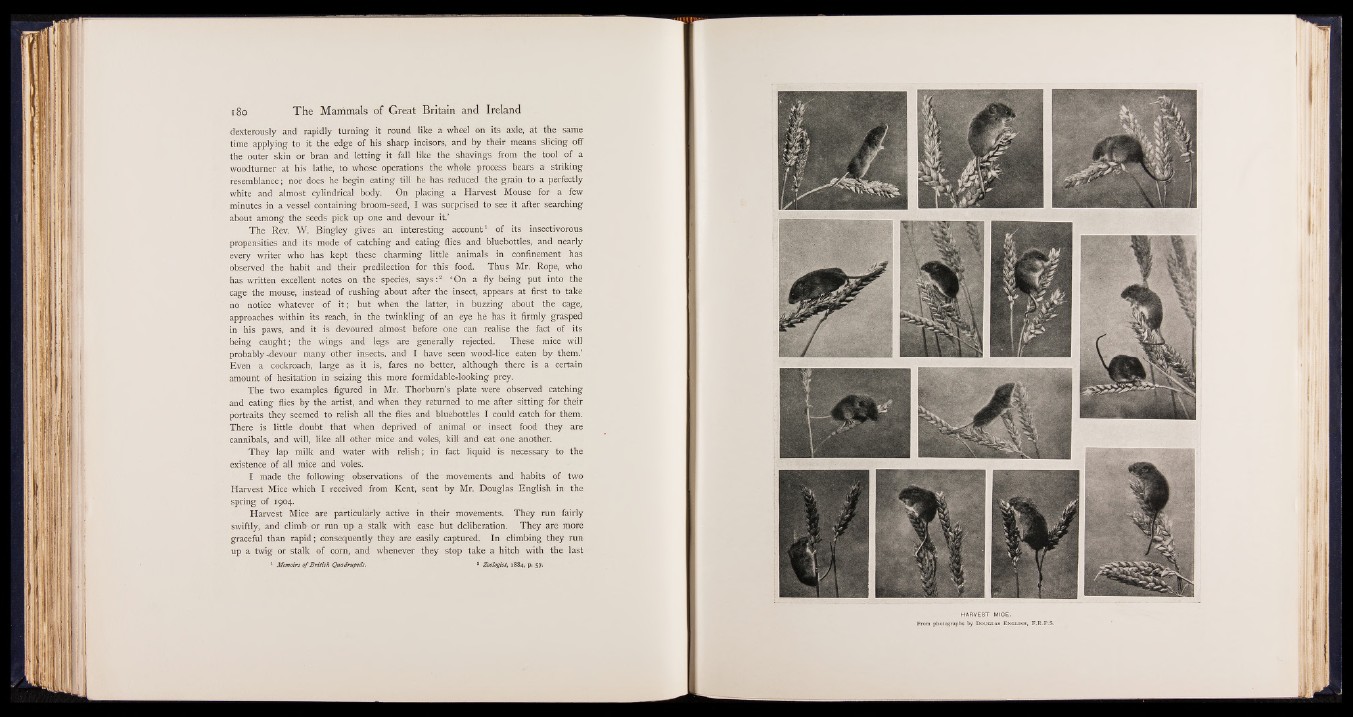
dexterously and rapidly turning it round like a wheel on its axle, at the same
time applying to it the edge of his sharp incisors, and by their means slicing off
the outer skin or bran and letting it fall like the shavings from the tool of a
woodturner at his lathe, to whose operations the whole process bears a striking
resemblance; nor does he begin eating till he has reduced the grain to a perfectly
white and almost cylindrical body. On placing a Harvest Mouse for a few
minutes in a vessel containing broom-seed, I was surprised to see it after searching
about among the seeds pick up one and devour it.’
The Rev. W. Bingley gives an interesting account1 of its insectivorous
propensities and its mode of catching and eating flies and bluebottles, and nearly
every writer who has kept these charming little animals in confinement has
observed the habit and their predilection for this food. Thus Mr. Rope, who
has written excellent notes on the species, say s :2 * On a fly being put into the
cage the mouse, instead of rushing about after the insect, appears at first to take
no notice whatever of it ; but when the latter, in buzzing about the cage,
approaches within its reach, in the twinkling of an eye he has it firmly grasped
in his paws, and it is devoured almost before one can realise the fact of its
being caught; the wings and legs are generally rejected. These mice will
probably-devour many other insects, and I have seen wood-lice eaten by them.’
Even a cockroach, large as it is, fares no better, although there is a certain
amount of hesitation in seizing this more -formidableJooking prey.
The two examples figured in Mr. Thorburn’s plate were observed catching
and eating flies by the artist, and when they returned to me after sitting for their
portraits they seemed to relish all the flies and bluebottles I could catch for them.
There is little doubt that when deprived of animal or insect food they are
cannibals, and will, like all other mice and voles, kill and eat one another.
They lap milk and water with relish; in fact liquid is necessary to the
existence of all mice and voles.
I made the following observations of the movements and habits of two
Harvest Mice which I received from Kent, sent by Mr. Douglas English in the
spring of 1904.
Harvest Mice are particularly active in their movements. They run fairly
swiftly, and climb or run up a stalk with ease but deliberation. They are more
graceful than rapid; consequently they are easily captured. In climbing they run
up a twig or stalk of corn, and whenever they stop take a hitch with the last
1 Memoirs o f British Quadrupeds. a Zoologist, 1884, p. 57.